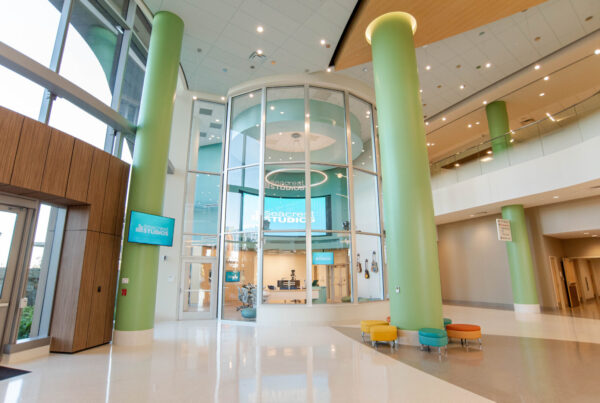Are you thinking about future office technology or how it impacts those who aren’t even in the office? Remote workers, in-person employees, and hybrid technologists who spend their days in multiple offices all over the globe, truly see it all when it comes to modern workplace and office space needs, especially regarding the technology needed to accommodate the entire workforce.
When the pandemic first hit, most companies didn’t even have this situation in their most thorough of plans. The pandemic moved us at least 5 years forward seemingly overnight in terms of office technology advancements and needs surrounding the remote worker. We must evolve our workspaces to attract, retain, and provide resources for the best talent available for our organizations.
Office Technology Must Support Employees
Microsoft conducted a study in 2021 that found 70% of their workers expressed a desire to maintain the flexibility of working from home routinely and coming into a corporate office only as necessary or as a last resort. What we have learned about supporting the home worker is that having collaboratively being able to communicate from anywhere is vital to the business continuation planning for most companies. Companies that do their workplace technology well, thrived during a uniquely challenging time, while those that haven’t have quite often stumbled into more difficult challenges.
If the last few years have taught us anything, they’ve certainly taught us that we must collectively try and look at the employees and their production through a more forward-thinking lens. In a post-pandemic world, it is not only a necessity, but vital to organization survival that every employee is supported from both a safety, comfort, and productivity standpoint. We must re-imagine the workplace and the employee experience now before it’s too late and we fall behind. Consistency is the buzzword of success in this instance.
Experiences & Processes Must Be Consistent
Think about early adopters of the many software ecosystems we now see in the workplace; maybe it’s Salesforce, or Google Analytics, or even Office 365 or G Suite. They were ahead of the curve when the rest of us had to catch up. They had communication structures in place that made it easy for them to simply worry about business when everyone else was worrying about the software. Processes were already in place for conducting business, and things were highly efficient for these early adopters as a result. The process is what matters most in this instance, and it is afforded by the technology in place. This is really the backbone of the successful transition to the future mix of in-office, remote, and hybrid work.

During the pandemic, organizations based on brick-and-mortar store-based sales with weak e-commerce or lacking in omnichannel sales struggled to implement technologies to support their call centers remotely and achieve things like positive customer reviews or encouraging internal metrics. Worse yet, their revenue numbers often declined. This was also the case for those companies that didn’t have remote-work processes ready. Many companies struggled not only to get the appropriate technology in place but had no idea how to implement it. And even worse yet, these companies had no idea how to train their employees on it or build their own workflows once it was in place.
As we continue to grow the remote workforce and as more workers return to the office, we will face many challenges in the short and long term in formally adopting and standardizing these processes and strategies. In the modern workplace and workplaces of the future, employees will have little tolerance for an office environment that hinders their ability to easily connect and collaborate globally, whether it is at home or in their headquarters. However, the underlying fact remains that our processes, data, apps, CRM platforms, accounting technologies, and more must flow reliably and securely.

When we start thinking about how this relates to AV, we must remember that employees are looking for flexibility and functionality above all. The technology must not interrupt the process, and in many instances, must be portable, fully integrated with other systems, and easy to use in different locations. The software, as well as the equipment, must be the same and allow for flexible work locations and smooth real-time communication of all data points across locations globally. The person sitting in their living room should get the same experience and the same data as someone sitting in a Chicago headquarters meeting room and a remote participant in a Toronto co-working space.
In addition, we must also account for scalability. As companies rebound and grow again post-pandemic, the technologies we use must be able to scale with that growth. Whether that takes the form of people coming back to work environments with more small conference rooms with connected technologies like video conferencing, or it means sending out tech to remote workers to join virtual meetings, we must find and use both hardware and software solutions that do no disrupt the worker, nor the flow of business.
If you’d like to discuss this topic and learn more about the hardware offerings and workplace design, please reach out to us we would be happy to chat!











